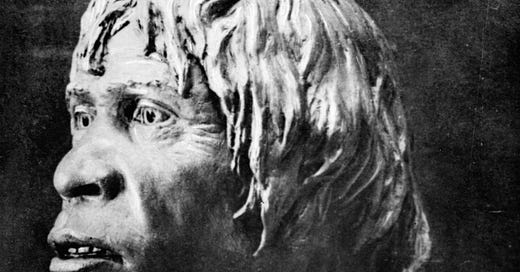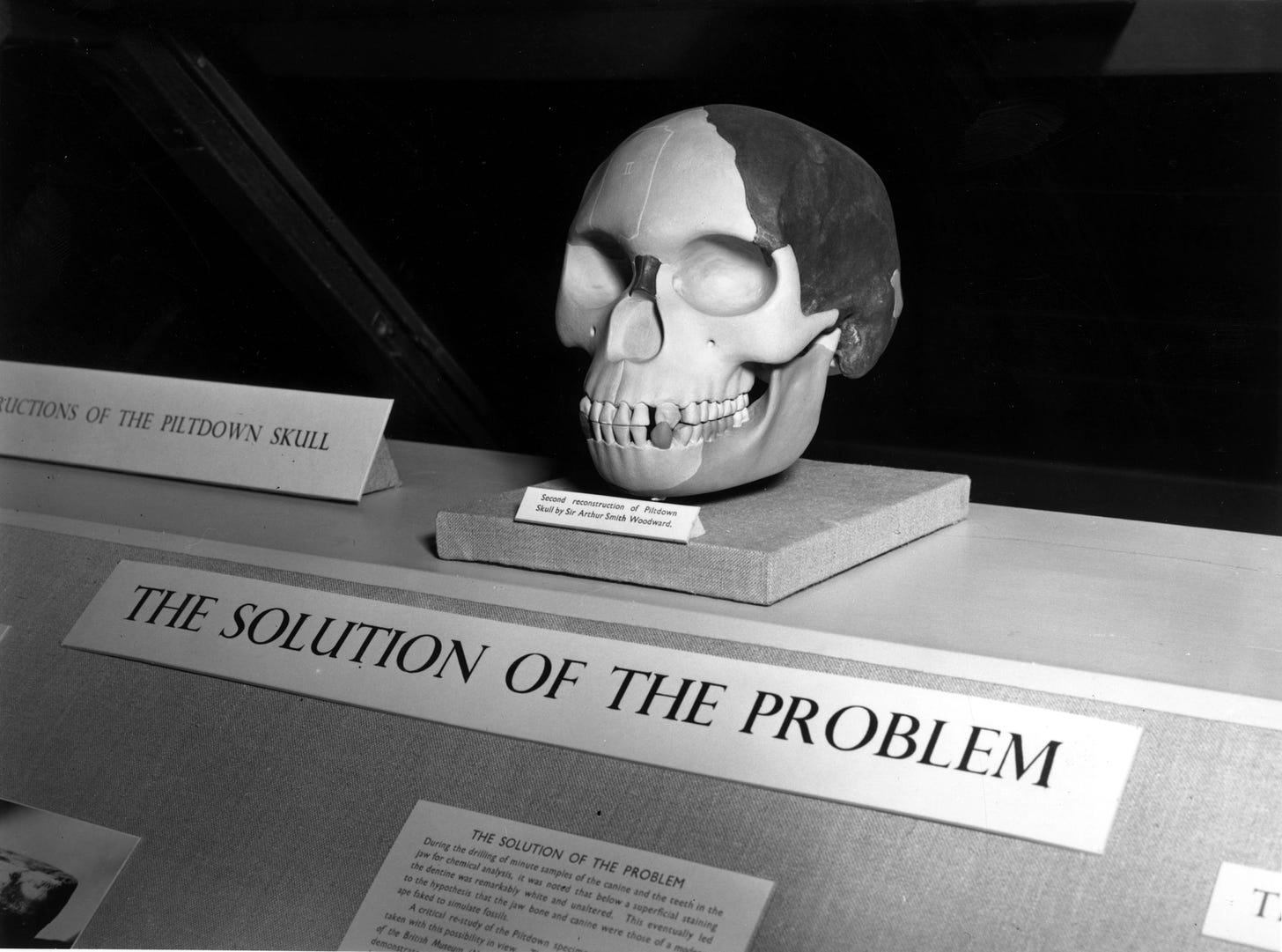The Most Notorious Scientific Hoax in History
Piltdown man, whose fossil fooled scholars for more than 40 years was one of the most notorious hoaxes in the history of science.
It Was a Masterful Hoax
The human psyche craves recognition. We all love that dopamine rush that overwhelms us when we are appreciated for our abilities, attitude, or appearance. It is natural, nothing wrong with it.
The problem occurs when the ‘craving for recognition’ becomes an obsession, a lofty goal to be achieved at any cost of morality and ethical behavior. That was the conundrum in which Charles Dawson, an amateur archaeologist, found himself in the spring of 1909 when he wrote to Arthur Smith Woodward, the curator of geology at the Natural History Museum in London.
"I have been waiting for the big ‘find’ which never seems to come along."
Dawson and Woodward were great friends centered around their passion for fossils. Dawson had just crossed 45 years, and by that time, he had authored and co-authored more than 50 articles on paleontology.
He was also instrumental in playing key roles in multiple scientific excavations. Despite all that, he was still waiting for recognition as a paleontologist. He dreamed of being elected as a fellow of the Royal Society of London but was never nominated.
He craved recognition, but nobody valued his contributions. That was when he hatched the plan to perpetuate one of the most notorious scientific hoaxes in history. This fraud fooled scholars for more than 40 years and twisted the very definition of human evolution.
As the scientists at the British Natural History Museum and University of Oxford who finally uncovered the Piltdown Man hoax in 1953 tell us.
"It is extraordinarily skillful. It is so entirely unscrupulous and inexplicable as to find no parallel in the history of paleontological discovery."
Dawson Makes an ‘Exciting’ Discovery
In February 1912, paleontologist Arthur Smith Woodward received a letter from Charles Dawson. Dawson had discovered an ‘exciting’ find of fossil fragments of a human skull in a river gravel pit near Piltdown, in Sussex, and he wanted Woodward to help him make history.
For the next four months, both of them made astounding discoveries. Along with some additional skull fragments, they also recovered a partial jaw, teeth, fossils of animals, and some primitive tools. On December 18, 1912, they presented their findings at a London Geological Society meeting.
They had created history by discovering Eoanthropus dawsoni or ‘Dawson’s Dawn-man’, a missing link between apes and humans that would have lived half a million years ago.
Dawson became a celebrity overnight as the scientific community hailed the so-called Piltdown Man as one of the most significant discoveries of science. The 1900s were also an era of European imperialism, and the colonial powers desperately wanted an endorsement of their superiority over Asian and African people.
Anthropologists had still not ascertained where humans first arose, so discovering such a find in Europe perfectly matched the prejudiced expectations of those times. And the result was that Dawson’s find was never subjected to serious investigation.
Two years later, Dawson further ‘validated’ his conclusions with new finds of stone tools, fragments of other animals, and a bone slab carved like a ‘cricket bat’ in another pit close to the first one. The 2nd discovery completely dispelled all doubts harbored by a minority of scientists. For the next four decades, the history of Palaeontology was utterly dominated and rewritten by the Piltdown Man.
In 1916 Dawson died, and Woodward carried forward his legacy by referring to the Piltdown Man as ‘The Earliest Englishman’ and even published a short book with the title. Several high-profile personalities, including Sir Arthur Canon Doyle and Clarence Darrow, expressed their fascination with the Piltdown Man, hailing it as one of the most exciting discoveries ever in the British Empire.
There was only one problem, the Piltdown Man was a fake. And it was one of the best fakes ever created in science.
The Hoax Was Finally Uncovered
In 1953, Kenneth Oakley, Wilfrid Le Gros Clark, and Joseph Weiner, scientists at the British Natural History Museum and University of Oxford, reported that the Piltdown fossil was just a mishmash of human and orang-utan bones, not more than 720 years old.
Further investigations revealed that the bone fragment had been deliberately stained, some with chromium and others with acid iron sulfate solution, before being introduced into the pits.
Even the teeth had been subjected to artificial abrasion to simulate the human mode of wear and tear, and dental putty was used to keep the teeth in place. The scientists called the person who engineered the hoax ‘extraordinarily skillful’.
And almost 100 years later, in 2016, an article published in the journal Royal Society Open Science finally revealed the person responsible for the hoax based on extensive DNA analysis. His name was Charles Dawson, and he was the sole perpetrator of the crime.
But significant damage had been done. Scientists were misled for almost four decades, and because of this hoax, other genuine finds, such as the 1924 discovery of the Taung Child, were either ignored or considered unimportant. And adding to that, the hoax weakened the public’s confidence in science, particularly scientists who talk about evolution.
As a paleoanthropologist, Isabelle De Groote rightly says about the Piltdown man.
"Whether Dawson acted alone is uncertain, but his hunger for acclaim may have driven him to risk his reputation and misdirect the course of anthropology for decades. The Piltdown hoax stands as a cautionary tale to scientists not to be led by preconceived ideas, but to use scientific integrity and rigor in the face of novel discoveries."
Sources
· The Piltdown Man: The Greatest Scientific Fraud of the 20th Century
· The Piltdown Hoax: A Lesson on Confirmation Bias in Science






